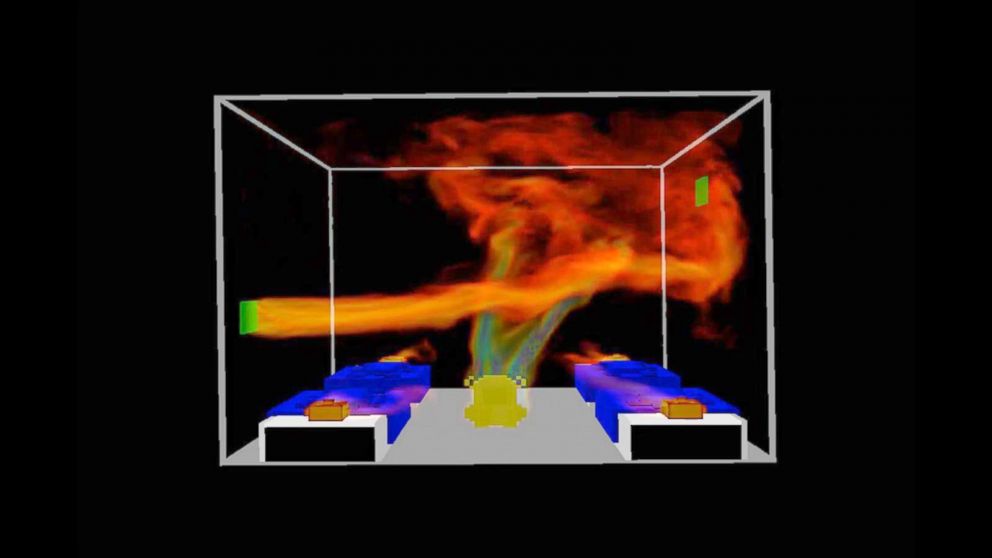See How Quickly an Infection Can Spread in a Hospital
A UK scientist devised a way to show how hospital germs can spread.

— -- A researcher has devised a way to show how fast germs can spread in a hospital.
Marco-Felipe King, a post-doctoral research fellow at the University of Leeds, created a diagram that revealed how even a well-ventilated hospital room can harbor plenty of germs and viruses.
King said he wanted to study the problem since one out of every 15 admitted patients in the United Kingdom contracts a disease while at the hospital. He said he also wanted to see how germs can spread in a multi-patient room versus a single-patient room.
King examined 400 nurses and doctors as they treated patients. By putting in data into a mathematical model, he predicted that health care workers’ hands may be contaminated 20 percent more often in multi-patient rooms even if hand washing was the same as when health care workers were treating patients in a single room.
King and his co-authors also looked to see how a single infectious patient can quickly expel contaminants. Since the team couldn't actually use a real bacteria for the simulation they used advanced simulations (seen below) that illustrate how a person with Norovirus or another common infectious disease could quickly contaminate the surrounding area.
King said he wanted to challenge the "myth that infectious droplets that patients leave breathing or coughing are fully removed by ventilation system."
In videos above, the particles denoting infectious droplets spread through a large portion of a multi-patient hospital room in a few minutes.
King also used advanced computer programming to show how ventilation systems can affect body temperature in a room. He said the simulation was a jumping off point to explore how ventilation can affect the spread of bacteria or infectious viruses in future studies.
Dr. Buddy Creech, pediatric infectious disease doctor at Vanderbilt University Medical Center, said these kinds of studies are key to helping patients stay healthy.
"This is one of the more important issues we are dealing with now," Creech told ABC News. "We have to understand the biology of contamination of surfaces and contamination of air so that we understand how to disinfect the room after the patient leaves that room."
Creech explained that as we move, microscopic bacteria and viruses move with us. The medical field is still trying to understand exactly how to stop new infections from occurring.
"We do understand a lot of it, but it’s a changing world," explained Creech. "These organisms are alive and they change. They may develop thicker outer coating."



